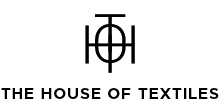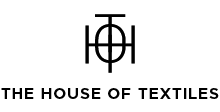Choosing the Right Fabric for Your Embroidery
The most important decision you can make when entering the textile industry is the kind of cloth to use. There are many different embroidery fabrics online available. Depending on your embroidery, you'll need a specific fabric. But how to pick the proper cloth is the real issue. Although practically any fabric or material can be embroidered on, each variety offers its advantages and disadvantages.

Here are some pointers for choosing the right embroidery fabric online in India.
Consider the Weight of the Embroidery
The embroidery fabric online ought to be strong enough to hold the total weight of your project. If a lightweight cloth has heavy yarn, beading, or ribbon on it, it will probably pull and stretch. A heavier-weight cloth would be required for a design using wool, beads, or similar heavier stitching materials. For instance, a design with several ribbon-embroidered flowers would be heavier than one with only a few cross-stitched flowers. You will need sturdy fabric that can keep its shape if extraneous features like buttons, ribbons, beading, or other embellishments are added.
Consider the Weight of the Thread
The cloth must support your chosen thread's weight and width. Keep the following in mind when choosing the embroidery fabric online:
The thread shouldn't be able to show through the cloth to the front of your item. The only situation in which this rule does not apply is when you intentionally seek this effect, but that is an uncommon scenario.
A hefty thread might cause a fragile fabric to tear apart or take over the cloth excessively, whereas a delicate thread can become lost in a too-heavy fabric.
The fabric's weave must be strong enough to sustain the pressure of a wide thread (described further below).
A design that has elastic textiles should be avoided.
Strength and Durability of the Weave
The cloth must have a strong enough weave to keep the threads in place without being too tight. Be mindful of the thread count representing the fabric's weave and indicating whether the fabric will be easy for a needle to pass through. A stitching project is significantly simpler to complete on cloth with a loose weave than one with a tight weave. Cotton, muslin, linen, Aida, and even some reused fabrics used as flour and feed sacks are examples of fabrics with a loose weave. Consider how much a thread count is valued in sheets to appreciate this better. Such a fabric would make it difficult to embroider on the cloth. Thus, you want to go for the lower thread count.
Larger threads work well in looser weaves, which will be less able to hold the threads. Most full-weave fabrics enable you to stitch without leaving visible gaps or holes, and this is a crucial criterion for neatness and consistency in many projects. If you're embroidering in a thread painting method, a finer, tighter-woven fabric, like silk or voile, may be more appropriate because it will enable you to highlight all the stitches clearly.
Selecting Between Natural and Synthetic Fibres
Even though this is a personal preference based on your individual embroidery style, many stitchers favour natural fabrics because they are frequently more user-friendly. For instance, muslin, cotton, and wool are soft to the touch and have good give when the needle is inserted into them. When working on synthetics, it can be more challenging to manipulate, push the needle through, and just feel them. On delicate threads, synthetics can also be abrasive. To identify your preferred mediums, it's best to experiment until you find what you need for the job and how comfortable you are working with various sorts of embroidery fabric online.
Consider the Kind of Stitching
Think about whether you'll create straightforward stitches or intricate ones that progress in weight and size. The fabric required depends on the stitch's style, and a stronger fabric backing is required for more intricate stitching, such as ribbon flowers, to sustain the stitch's finished weight.
Choose the Type of Finishing You Want
How do you want the project to look after it is finished? Because the fabric background will affect how the product feels overall, the finish will play a significant role in the embroidery fabric online selection process. Examine your available fabric options carefully to determine which ones best suit the style of your project. How does the fabric feel when you touch it, too? Since you'll be handling the fabric a lot, this is important. Choose the option that best satisfies the requirements of your project by combining your "feel" with the aforementioned factors. Considerations include:
Matt fabric: This will result in a non-reflective surface. This works well for busy needlework projects, rustic embroidery, and embroidery with bright, sparkly threads.
Shiny fabric: This will give the product a more polished appearance. With such a fabric, the contrast between your project and the background is increased.
Patterned fabric: If the embroidery fabric online India has a pattern, ensure it complements your design and doesn't become the main attraction. You can find that the pattern is inappropriate for the embroidery project if it overwhelms the entire design, clashes with other patterns, is too bold, or is simply too dominant. Small gingham checks with minimal colour variation and a single colossal cloth pattern design that is the foundation for your embroidery are both suitable patterns.

Wrapping Up
Choosing the right embroidery fabric online can be daunting, but you can easily find the piece you are looking for with the above mentioned guidelines. We, at House of Textiles, manufacture premium fabrics and have served clients for over forty years. We offer quality fabrics ranging from daily wear purposes to high-end showstopper fabrics. We have strict quality checks for every fabric to ensure that every fabric manufactured in our factory meets industry standards. We source the best quality materials and utilize cutting-edge techniques to deliver the perfect fabric.










